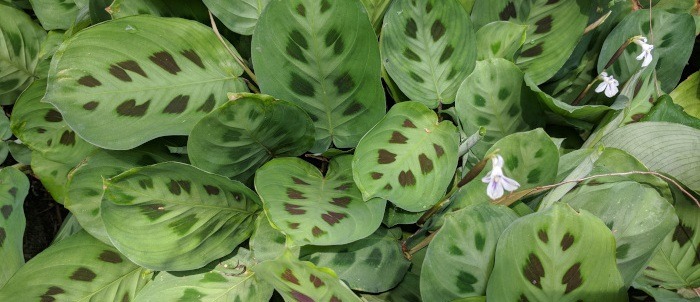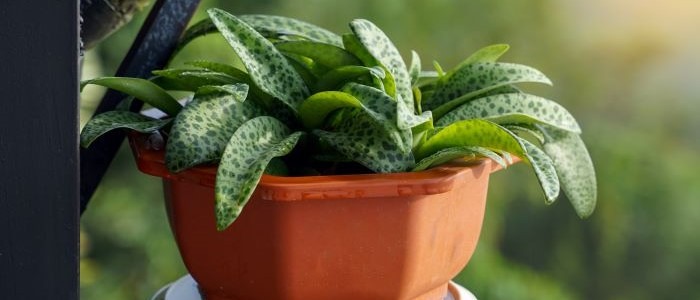Welcome to the world of the Maranta plant, also known as the prayer plant! This beautiful houseplant is a must-have if you’re looking for an easy-care plant that will bring life and vibrancy to your home. In this blog, we’ll discuss everything you need to know about taking care of your Maranta plant so that it can flourish and bring you joy for years to come.
From basic watering and feeding tips to troubleshooting common problems with Maranta care, we’ve got you covered. So let’s get started! With the right knowledge and a little bit of effort, caring for your Maranta will be easy and rewarding

Maranta Plant Frequently Asked Questions
Are Maranta plants easy to propagate?
Yes, Maranta plants can be easily propagated through division or stem cuttings. Dividing the plant involves separating the root ball into smaller sections and replanting them in separate pots. Stem cuttings can be taken from the plant and placed in water or soil to root and grow into new plants. With proper care and attention, Maranta plants can quickly multiply and fill a space with their beautiful foliage.
Why is the Maranta called a Prayer plant?
The Maranta is commonly referred to as the "prayer plant due to the way its leaves fold up at night, resembling hands in prayer. This phenomenon is known as nyctinasty and is a natural response to changes in light and temperature. It is a fascinating characteristic that adds to the plant's unique charm and appeal. In addition to its interesting behavior, the Maranta is also known for its striking foliage, which comes in a range of colors and patterns.
Caring for the Maranta Plant or Prayer Plant
Having a Maranta plant or “prayer plant” in your home can add a lot of life to your space. In addition to being beautiful and easy to care for, Marantas are known for their special ability to move their leaves up and down in response to light! With the right care, these plants can thrive indoors for many years. Here are some tips on keeping your Maranta looking its best:
1. Light – Marantas love bright, indirect sunlight and need about 4-6 hours of light per day. If you notice the leaves starting to look pale or dull, it may be a sign that they’re not getting enough light.
2. Water – Marantas like to stay consistently moist, so it’s best to water your plant when the top inch or two of the soil is dry. The best way to tell if your plant needs more water is to stick your finger in the soil and check its moisture level.
3. Temperature – Marantas thrive in temperatures between 65 and 80 degrees Fahrenheit. If it gets too cold or too hot, the leaves will start to curl up.
4. Humidity – Marantas prefer higher levels of humidity (60% or more). You can increase the humidity level around your plant by misting it regularly with a spray bottle filled with water or setting it on a tray of wet pebbles.
5. Fertilizer – Marantas benefit from a balanced fertilizer that is applied once every month during the growing season (spring and summer). During fall and winter, you can reduce fertilizer to every other month.
Following these tips will help ensure that your Maranta stays healthy and happy! Enjoy the beauty of this unique plant in your home.
Propagating the Maranta Plant or Prayer Plants
If you’re looking for a low-maintenance houseplant with striking foliage, the Maranta or Prayer Plant is a great option. Not only is it beautiful, but it’s also easy to propagate! Here are some tips on how to successfully propagate this unique plant.
1. Choose strong and healthy stems from your existing Prayer Plant. Make sure to use ones with at least two sets of leaves.
2. Cut the stem at a 45-degree angle, making sure you leave enough of the stem so that it can be planted in the soil without breaking off.
3. Place your cuttings in a jar or glass filled with water and set aside in a warm spot out of direct sunlight.
4. Change the water every few days to make sure it’s clean and free from any bacteria or debris.
5. After a few weeks, you should start to see little white roots forming at the base of your stems. Once your cuttings have developed strong roots, it’s time to pot them up.
6. Choose a pot filled with well-draining soil and gently place your cuttings into the new soil. Make sure you keep the soil moist but not soggy, as this is key for successful propagation.
7. Place your newly potted Maranta cuttings in a bright spot, but not in direct sunlight. You can also use a grow light to add more light if needed.
By following these steps, you’ll soon have beautiful Prayer Plants growing in no time! Have fun propagating and enjoy the beauty of your new plants!
Pruning the Maranta Plant or Prayer Plant
Pruning is an important part of caring for a Maranta plant, also known as a prayer plant. Here are some helpful tips for correctly pruning this gorgeous houseplant:
1. Start by examining the leaves and stems of your Maranta to identify any dead or diseased parts that need removing. Cut away these areas with a pair of sterilized garden scissors or pruning shears.
2. Identify any crowded stems and foliage that need to be thinned out. Gently remove these sections by cutting them off at the base. This will help your Maranta get more light and air circulation, resulting in a healthier plant overall.
3. When you’re done pruning, clean up any dead leaves or stems from the floor and dispose of them in the trash. This will help prevent the disease from spreading to other parts of your Maranta plant.
4. Finally, remember to water your Maranta after pruning as it can be a bit of a shock for the plant. Water your Maranta regularly and make sure it has plenty of indirect sunlight for the best results.
Hopefully, these tips have been helpful in getting your prayer plant pruned correctly! With regular care, you’ll be able to enjoy its gorgeous foliage and easy-care nature for many years to come.
Common Problems Found in the Maranta Plant
Maranta plants are beautiful, easy-to-care-for houseplants that thrive in warm, humid environments. Although maranta plants are generally low maintenance and hardy, they can experience some common problems from time to time. In this blog, we’ll take a look at some of the most common issues that may arise with maranta plants.
The first issue that may be encountered with a maranta plant is insufficient light. Maranta plants require bright, indirect light to thrive, so they should be placed in an area where they get enough light but aren’t exposed to direct sunlight. If the plant isn’t getting enough light, it may become leggy or start to wilt.
Another common issue with maranta plants is overwatering. Since maranta plants prefer moist, but not soggy, soil, you should only water your plant once the top inch of soil has dried out completely. If the plant is watered too often, it could lead to root rot.
Finally, maranta plants can also suffer from pests such as spider mites and mealybugs. Spider mites are tiny red or yellow spiders that feed on the plant’s sap, while mealybugs look like small white cottony masses stuck to the stems and leaves of the plant. To help alleviate these pests, you should inspect your plant regularly and remove any affected parts. You can also use insecticidal soaps or horticultural oils to keep the pests away.
Maranta plants are generally hardy and easy to care for houseplants, but they can experience some common problems from time to time. With proper care and attention, however, these issues can be prevented or easily treated. With the right conditions, your maranta plant will thrive for many years to come!
Conclusion
In conclusion, the Maranta plant also known as the Prayer plant is an ideal houseplant for any home. Its lush and vibrant foliage make it a beautiful addition to any space, while its low maintenance and easy care requirements mean that even those with busy lifestyles can keep this stunning plant looking it’s very best. Moreover, this gorgeous foliage has several air-purifying qualities that will help create a healthier home environment. With its stunning looks and multiple benefits, the Maranta plant is an ideal choice for anyone looking to spruce up their living space with some natural beauty!
Other Spotted Houseplants





